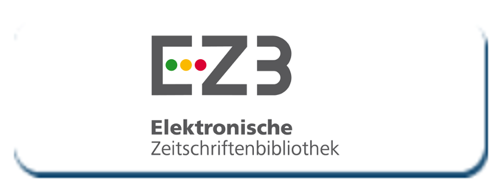Macrolide treatment in pediatric non-cystic fibrosis bronchiectasis: A meta-analysis
DOI:
https://doi.org/10.5281/zenodo.13119903Keywords:
Exacerbation frequency, long-term macrolide therapy, non-cystic fibrosis bronchiectasis, pediatric bronchiectasisAbstract
Objective: This meta-analysis aims to systematically review and synthesize the available data on long-term macrolide treatment for NCFB in children.
Materials and methods: On December 2, 2023, we conducted a comprehensive search across multiple databases, including PubMed, Cochrane Library, Embase, Web of Sciences, and SCOPUS. There were no restrictions on language. The search terms used were "Macrolides," "Azithromycin," "Clarithromycin," "Roxithromycin," "Erythromycin," "Bronchiectasis," "Kartagener syndrome," and "Ciliary motility disorders." A total of 4 RCTs were included.
Results: A total of 92 patients in Macrolid group and 87 patients in control group were included in this meta analysis. Despite variations in macrolide preparations, long-term macrolide use significantly reduced the frequency of acute exacerbations in bronchiectasis (I2=0%) (OR: 0.30, 95% CI: 0.10 to 0.87; p=0.03). The findings showed that long-term macrolide treatment significantly reduced the mean exacerbations per patient (I2=84%; WMD -1.40, 95% CI: -2.26 to -0.54; p=0.001). The results indicated no significant difference in the frequency of exacerbation-related admissions between the azithromycin group and the control group (OR: 0.28, 95% CI: 0.07 to 1.11; p=0.07). The results showed no significant difference in FEV1 between the macrolide treatment group and the control group (I2=80%; WMD 2.21, 95% CI: -2.44 to 6.87; p=0.35). The results indicated no significant difference in the changes of FEV1% predicted before and after treatment between the macrolide group and the control group (I2=0%; WMD 2.19, 95% CI: -2.80 to 7.19; p=0.39).
Conclusions: This meta-analysis reveals that long-term macrolide treatment, spanning 3 to 24 months, significantly reduces the frequency of exacerbations in pediatric NCFB.
References
Ramsey KA, Schultz A. Monitoring disease progression in childhood bronchiectasis. Front Pediatr. 2022;10:1010016.
Gallucci M, Candela E, Di Palmo E, Miniaci A, Pession A. Non-Cystic Fibrosis Bronchiectasis in Pediatric Age: A Case Series in a Metropolitan Area of Northern Italy. Children (Basel). 2022;9(9):1420.
Lee E, Shim JY, Kim HY, Suh DI, Choi YJ, Han MY et al. Clinical characteristics and etiologies of bronchiectasis in Korean children: A multicenter retrospective study. Respir Med. 2019;150:8-14.
Guan Y, Zhang X, Yang H, Xu H, Zhao S. Long-Term Azithromycin Treatment in Pediatric Primary Ciliary Dyskinesia: A Retrospective Study. Front Pediatr. 2022;10:905253.
Wolter J, Seeney S, Bell S, Bowler S, Masel P, McCormack J. Effect of long term treatment with azithromycin on disease parameters in cystic fibrosis: a randomised trial. Thorax. 2002;57(3):212-6.
Lee E, Lee YY. Risk factors for the development of post-infectious bronchiolitis obliterans after Mycoplasma pneumoniae pneumonia in the era of increasing macrolide resistance. Respir Med. 2020;175:106209.
Emiralioğlu N, Öztürk Z, Yalçın E, Doğru D, Özçelik U, Kiper N. Long term azithromycin therapy in patients with cystic fibrosis. Turk J Pediatr. 2016;58(1):34-40.
Wang D, Fu W, Dai J. Meta-analysis of macrolide maintenance therapy for prevention of disease exacerbations in patients with noncystic fibrosis bronchiectasis. Medicine (Baltimore). 2019;98(17):e15285.
Gao YH, Guan WJ, Xu G, Tang Y, Gao Y, Lin ZY, et al. Macrolide therapy in adults and children with non-cystic fibrosis bronchiectasis: a systematic review and meta-analysis. PLoS One. 2014;9(3):e90047.
Kelly C, Chalmers JD, Crossingham I, Relph N, Felix LM, Evans DJ, et al. Macrolide antibiotics for bronchiectasis. Cochrane Database Syst Rev. 2018;3(3):CD012406.
Khan J, Moran B, McCarthy C, Butler MW, Franciosi AN. Management of comorbidities in difficult and severe asthma. Breathe (Sheff). 2023;19(3):230133.
Koh YY, Lee MH, Sun YH, Sung KW, Chae JH. Effect of roxithromycin on airway responsiveness in children with bronchiectasis: A double-blind, placebo-controlled study. Eur Respir J. 1997;10:994-9.
Masekela R, Anderson R, Gongxeka H, Steel HC, Becker PJ, Green RJ. Lack of efficacy of an immunomodulatory macrolide in childhood HIV related bronchiectasis: A randomised, placebo-controlled trial. J Antivir Antiretrovir. 2013;5:044–49.
Valery PC, Morris PS, Byrnes CA, Grimwood K, Torzillo PJ, Bauert PA, et al. Long-term azithromycin for Indigenous children with non-cystic-fibrosis bronchiectasis or chronic suppurative lung disease (Bronchiectasis Intervention Study): A multicentre, double-blind, randomised controlled trial. Lancet Respir Med. 2013;1:610–620.
Yalcin E, Kiper N, Ozcelik U, Dogru D, Firat P, Sahin A, et al. Effects of claritromycin on inflammatory parameters and clinical conditions in children with bronchiectasis. J Clin Pharm Ther. 2006;31:49–55.
Wu Y, Bi WT, Qu LP, Fan J, Kong XJ, Ji CC, et al. Administration of macrolide antibiotics increases cardiovascular risk. Front Cardiovasc Med. 2023;10:1117254.
Dhar R, Talwar D, Singh V, Dumra H, Rajan S, Jindal SK. Expert recommendations on the role of macrolides in chronic respiratory diseases. Lung India. 2021;38(2):174-82.
Downloads
Published
How to Cite
Issue
Section
License
Copyright (c) 2024 Journal of Clinical Trials and Experimental Investigations

This work is licensed under a Creative Commons Attribution 4.0 International License.
![]() The journal is licensed under a Attribution4.0 International (CC BY 4.0).
The journal is licensed under a Attribution4.0 International (CC BY 4.0).











